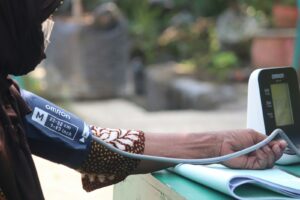Implementing Scalable IoT Architecture in Healthcare
Enhancing Patient Monitoring with Scalable IoT Solutions
The implementation of scalable IoT architecture in healthcare has revolutionized patient monitoring, providing real-time data and enhancing the quality of care. In regions like Saudi Arabia and the UAE, where healthcare systems are rapidly advancing, scalable IoT solutions enable continuous monitoring of patients, both in hospitals and remotely. For instance, a leading healthcare provider in Dubai has integrated IoT devices that track vital signs such as heart rate, blood pressure, and oxygen levels. These devices transmit data to a centralized system where healthcare professionals can monitor patient conditions in real-time. This continuous monitoring allows for timely interventions, improving patient outcomes and reducing the need for frequent hospital visits. The scalability of the IoT architecture ensures that the system can handle an increasing number of devices and patients without compromising performance.
Improving Data Management and Accessibility
One of the key benefits of scalable IoT architecture in healthcare is the efficient management and accessibility of patient data. In Riyadh, healthcare facilities are leveraging IoT technology to create comprehensive patient data records that can be accessed by authorized personnel from anywhere at any time. This seamless access to data facilitates better coordination among healthcare providers and enhances the decision-making process. For example, a healthcare provider in Riyadh can integrate IoT devices with electronic health records (EHR) systems, ensuring that patient data is continuously updated and readily available for medical staff. This integration not only improves the efficiency of healthcare delivery but also ensures that patients receive personalized and timely care. The ability to scale the IoT system means that as more devices and data sources are added, the system can grow without becoming overwhelmed.
Ensuring Compliance and Security
The implementation of scalable IoT architecture in healthcare also addresses critical issues of compliance and security. In the UAE, where regulatory standards are stringent, healthcare providers must ensure that patient data is protected and that the IoT systems comply with industry regulations. Scalable IoT solutions incorporate advanced security measures such as encryption, authentication, and regular security audits to safeguard patient information. For example, a top-tier healthcare provider in Dubai has adopted a scalable IoT architecture that includes robust security protocols to protect patient data from breaches. This focus on security and compliance not only builds trust with patients but also ensures that healthcare providers meet regulatory requirements. The scalability of the IoT architecture allows for the integration of new security technologies as they become available, maintaining a high level of data protection.
Lessons Learned from Scalable IoT Architecture in Healthcare
Adopting a Patient-Centric Approach
A crucial lesson from implementing scalable IoT architecture in healthcare is the importance of adopting a patient-centric approach. In both Saudi Arabia and the UAE, successful IoT implementations prioritize the needs and experiences of patients. By focusing on patient outcomes, healthcare providers can design IoT systems that enhance the quality of care and improve patient satisfaction. For instance, in Riyadh, a healthcare facility implemented IoT-enabled patient monitoring systems that provide patients with real-time feedback and alerts on their health status. This patient-centric approach empowers patients to take an active role in managing their health, leading to better health outcomes and higher levels of engagement.
Building Interoperable Systems
Another valuable lesson from scalable IoT implementations is the importance of building interoperable systems. In Dubai, healthcare providers have recognized that IoT systems must be able to communicate and integrate with other healthcare technologies to be effective. Interoperability ensures that data flows seamlessly between different systems, enhancing the efficiency and accuracy of healthcare delivery. For example, a hospital in Dubai has integrated its IoT patient monitoring system with its EHR and telemedicine platforms, allowing for a comprehensive view of patient health. This integration facilitates better coordination among healthcare providers and ensures that patients receive holistic care. The scalability of the IoT architecture supports the addition of new devices and systems, maintaining interoperability as the healthcare ecosystem evolves.
Investing in Staff Training and Support
Successful implementation of scalable IoT architecture in healthcare also involves investing in staff training and support. In regions like Saudi Arabia and the UAE, where healthcare technology is rapidly advancing, it is essential to ensure that healthcare professionals are equipped to use IoT systems effectively. For example, a healthcare provider in Riyadh implemented an extensive training program for its staff when introducing a new IoT patient monitoring system. This training included hands-on sessions, user manuals, and ongoing support to ensure that the staff could fully utilize the system’s capabilities. Investing in training not only enhances the effectiveness of the IoT implementation but also improves staff confidence and job satisfaction.
Conclusion
The implementation of scalable IoT architecture in healthcare offers numerous benefits, including enhanced patient monitoring, improved data management, and robust security. The lessons learned from successful IoT implementations in Saudi Arabia and the UAE highlight the importance of a patient-centric approach, building interoperable systems, and investing in staff training and support. As healthcare providers continue to embrace IoT technology, adopting scalable and flexible IoT architectures will be crucial for improving healthcare delivery and achieving better patient outcomes. By leveraging these insights, healthcare organizations can navigate the complexities of IoT integration and build future-proof systems that meet the evolving needs of the healthcare sector.
—
#ScalableIoTArchitecture #HealthcareIoT #PatientMonitoring #IoTinHealthcare #SmartTechnology #ModernIoTSolutions #BusinessEfficiency #SaudiArabia #UAE #Riyadh #Dubai













